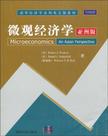微观经济学 亚洲版
出版时间:2009-12 出版社:清华大学 作者:(美)平狄克//鲁宾菲尔德//(新)科尔 页数:737
Tag标签:无
前言
世纪之交,中国与世界的发展呈现最显著的两大趋势——以网络为代表的信息技术的突飞猛进,以及经济全球化的激烈挑战。无论是无远弗界的因特网,还是日益密切的政治、经济、文化等方面的国际合作,都标示着21世纪的中国是一个更加开放的中国,也面临着一个更加开放的世界。教育,特别是管理教育总是扮演着学习与合作的先行者的角色。改革开放以来,尤其是20世纪90年代之后,为了探寻中国国情与国际上一切优秀的管理教育思想、方法和手段的完美结合,为了更好地培养高层次的“面向国际市场竞争、具备国际经营头脑”的管理者,我国的教育机构与美国、欧洲、澳洲以及亚洲一些国家和地区的大量的著名管理学院和顶尖跨国企业建立了长期密切的合作关系。以清华大学经济管理学院为例,2000年,学院顾问委员会成立,并于10月举行了第一次会议,2001年4月又举行了第二次会议。这个顾问委员会包括了世界上最大的一些跨国公司和中国几家顶尖企业的最高领导人,其阵容之大、层次之高,超过了世界上任何一所商学院。在这样高层次、多样化、重实效的管理教育国际合作中,教师和学生与国外的交流机会大幅度增加,越来越深刻地融入到全球性的教育、文化和思想观念的时代变革中,我们的管理教育工作者和经济管理学习者,更加真切地体验到这个世界正发生着深刻的变化,也更主动地探寻和把握着世界经济发展和跨国企业运作的脉搏。我国管理教育的发展.闭关锁国、闭门造车是绝对不行的,必须同国际接轨,按照国际一流的水准来要求自己。正如朱镕基同志在清华大学经济管理学院成立十周年时所发的贺信中指出的那样:“建设有中国特色的社会主义,需要一大批掌握市场经;齐的一般规律。熟悉其运行规则,而又了解中国企业实情的经济管理人才。清华大学经济管理学院就要敢于借鉴、引进世界上一切优秀的经济管理学院的教学内容、方法和手段.结合中国的国情,办成世界第一流的经管学院。”作为达到世界一流的一个重要基础,朱镕基同志多次建议清华的MBA教育要加强英语教学。我体会,这不仅因为英语是当今世界交往中重要的语言工具,是连接中国与世界的重要桥梁和媒介,而且更是中国经济管理人才参与国际竞争,加强国际合作,实现中国企业的国际战略的基石。
内容概要
《微观经济学(亚洲版)》既包括了微观经济学的传统内容,又吸收了微观经济学过去十几年的最新研究成果,例如:博弈论和竞争策略,不确定性和信息的作用,具有市场势力的厂商的定价分析。作者在论述微观经济学理论时作了与众不同的处理,通过100多个较详尽的案例来帮助消化和理解经济学理论,着重突出了这一理论对于管理和公共政策决策所具有的相关性和实用性。《微观经济学(亚洲版)》内容组织合理,叙述深入浅出,读后使人受益匪浅。尤其需要指出的是,这一版本特别增添了针对亚洲各国的内容,更适合我国读者学习如何利用经济学理论分析实际问题。 《微观经济学(亚洲版)》适合大专院校经济管理类专业本科生或研究生用做微观经济学教材,也可以作为工商管理硕士(MBA)的管理经济学教材。《微观经济学(亚洲版)》还可供经济管理类教学及科研人员用做参考书。
作者简介
作者:(美国)平狄克(Robert S.Pindyck) (美国)鲁宾菲尔德(Daniel L.Rubinfeld) (新加坡)科尔(Winston T.H.Koh)Robert S.Plndyck,美国麻省理工学院斯隆管理学院经济学和金融学教授,也是美国国家经济研究所的研究人员。1971年获麻省理工学院经济学博士学位。Daniel L.Rubinfeld,美国加利福尼亚大学伯克利分校法学和经济学教授。1972年获麻省理工学院博士学位。曾担任美国司法部的首席经济学家.在反托拉斯、竞争政策、法律与经济学、公共经济学等领域发表了大量文章。 Winston T.H.Koh,新加坡管理大学副教授。1988年获普林斯顿大学博士学位。
书籍目录
第1部分 引言:市场与价格第1章 绪论第2章 供给与需求的基本原理第2部分 生产者、消费者与竞争性市场第3章 消费者行为第4章 个体需求与市场需求第5章 不确定性与消费者行为第6章 生产第7章 生产成本第8章 利润最大化与竞争性供给第9章 竞争性市场分析 第3部分 市场结构与竞争策略第10章 市场势力:卖方垄断与买方垄断第11章 有市场势力条件下的定价第12章 垄断竞争与寡头第13章 博弈论与竞争策略第14章 要素市场第15章 投资、时间与资本市场第4部分 信息、市场失灵与政府的角色第16章 一般均衡与经济效率第17章 不对称信息条件下的市场第18章 外部性与公共品附录:回归分析的基本知识术语表部分习题答案图片索引索引
章节摘录
插图:Firms Firms also face limits in terms of the kinds of products that they can produce, and the resources available to produce them. The Shanghai Automobile Group, for example, is very good at producing cars and trucks, but it does not have the ability to produce airplanes, computers, or pharmaceuticals. It is also constrained in terms of financial resources and the current production capacity of its factories. Given these constraints, the Shanghai Automobile Group must decide how many of each type of vehicle to produce. If it wants to produce a larger total number of cars and trucks next year or the year after, it must decide whether to hire more workers, build new factories, or do both. The theory of the firm, the subject matter of Chapters 6 and 7, describes how these trade-offs can best be made.Prices and MarketsA second important theme of microeconomics is the role of prices. All of the trade- offs described above are based on the prices faced by consumers, workers, or firms. For example, a consumer trades off beef for chicken based partly on his or her preferences for each one, but also on their prices. Likewise, workers trade off labor for leisure based in part on the "price" that they can get for their labor——i.e., the wage. And firms decide whether to hire more workers or purchase more machines based in part on wage rates and machine prices.Microeconomics also describes how prices are determined. In a centrally planned economy, prices are set by the government. In a market economy, prices are determined by the interactions of consumers, workers, and firms. These interactions occur in markets——collections of buyers and sellers that together determine the price of a good. In the automobile market in China, for example, car prices are affected by competition among the Chinese car manufacturers, such as Shanghai Automobile, First Automotive Works, Dongfeng Automobile and other manufacturers, and also by the demands of consumers. The central role of markets is the third important theme of microeconomics. We will say more about the nature and operation of markets shortly.Theories and ModelsLike any science, economics is concerned with the explanations of observed phenomena. Why, for example, do firms tend to hire or lay off workers when the prices of their raw materials change? How many workers are likely to be hired or laid off by a firm or an industry if the price of raw materials increases by, say, 10 percent?In economics, as in other sciences, explanation and prediction are based on theories. Theories are developed to explain observed phenomena in terms of a set of basic rules and assumptions. The theory of the firm, for example, begins with a simple assumption——firms try to maximize their profits. The theory uses this assumption to explain how firms choose the amounts of labor, capital, and raw materials that they use for production and the amount of output they produce. It also explains how these choices depend on the prices of inputs;such as labor, capital, and raw materials, and the prices that firms can receive for their outputs.
编辑推荐
《微观经济学(亚洲版)》:清华经济学系列英文版教材。《微观经济学(亚洲版)》仅限于中华人民共和国境内(不包括中国香港、澳门特别行政区和中国台湾地区)销售发行。
图书封面
图书标签Tags
无
评论、评分、阅读与下载
用户评论 (总计5条)
- 绝对经典的微观初级教材。作者的语言功底很优秀,这本书中文翻译版不如原版,英语基础好的同学可以尝试选用哟
- 孩子头天想要,第二天就收到,感觉很好,叫我给个好评,满分。英文版能提现作者的著作原汁原味儿,很好。
- 这个书确实很给力,绝对的正版,非常满意。在这买了好多的书,每一次都满意,不错
- 很经典的教材了,书是英文正版的。很划算哦!
- 内容太好了,适合英文能力不强的读者配合中文译本阅读,因为中文译本的错误太多,用来校正错误。而且此书用词简单,讲解明晰,无需太大的词汇量,用作加强英文阅读能力也不错。
推荐图书
- 江戸浮世絵を読む
- 六大浮世絵師
- 浮世絵探検
- 歌川派の浮世絵と江戸出版界 役者絵を中心に
- ボストン美術館肉筆浮世絵 別巻
- 并非自杀契约
- 入党教材
- 江川達也の「平成の浮世絵」
- 浮世絵博覧会
- 浮世絵が語る小田原 小田原浮世絵集成
- ボストン美術館肉筆浮世絵 第3巻
- 浮世絵に見る江戸の子どもたち
- 浮世絵春画を読む 下
- 喧嘩番長2 フルスロットル公式ガイドブック
- 浮世絵春画を読む 上
- (2014)5年中考3年模拟
- 高橋克彦の浮世絵ワンダーランド
- ボストン美術館肉筆浮世絵 第2巻
- 上方浮世絵の世界
- ゴッドハンド オフィシャルガイドブック (カプコンオフィシャルブックス)
- 定本・浮世絵春画名品集成 別巻3
- 药师晋升考试指南
- 药理学(第三版)
- ニューヨーク・トラップ 奪われた浮世絵
- 叢林情人
